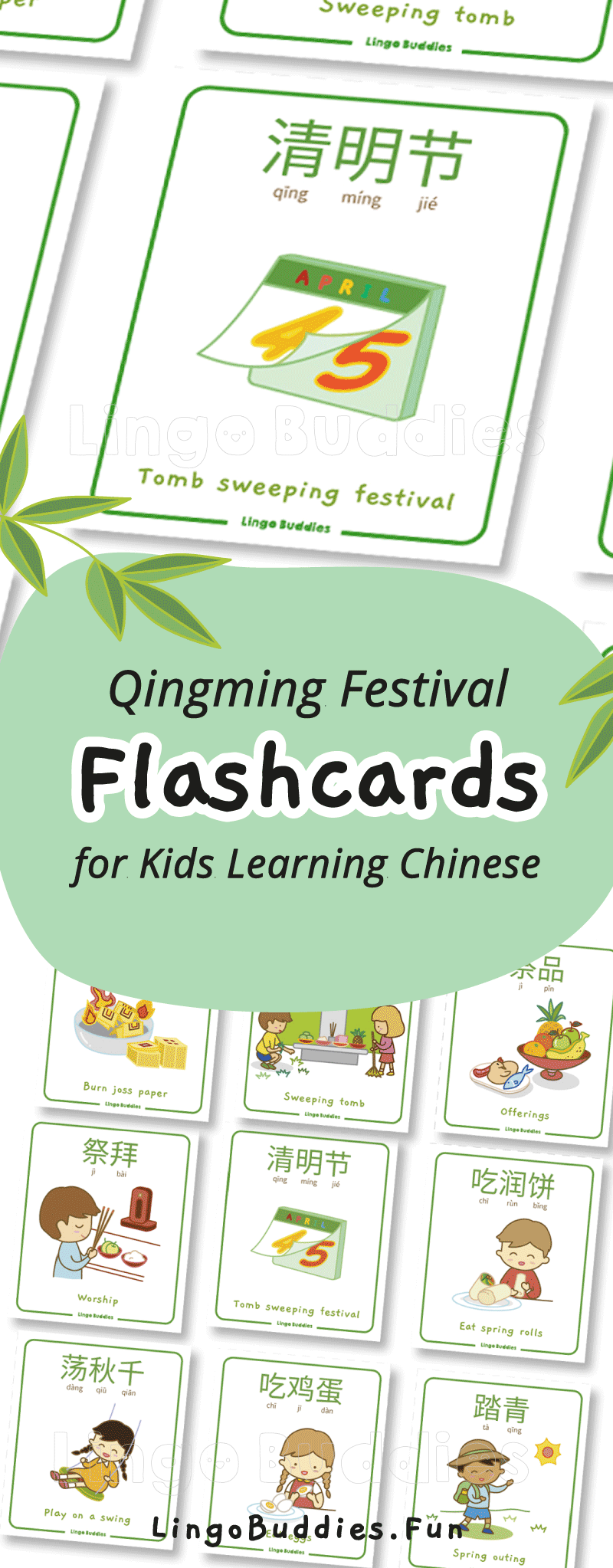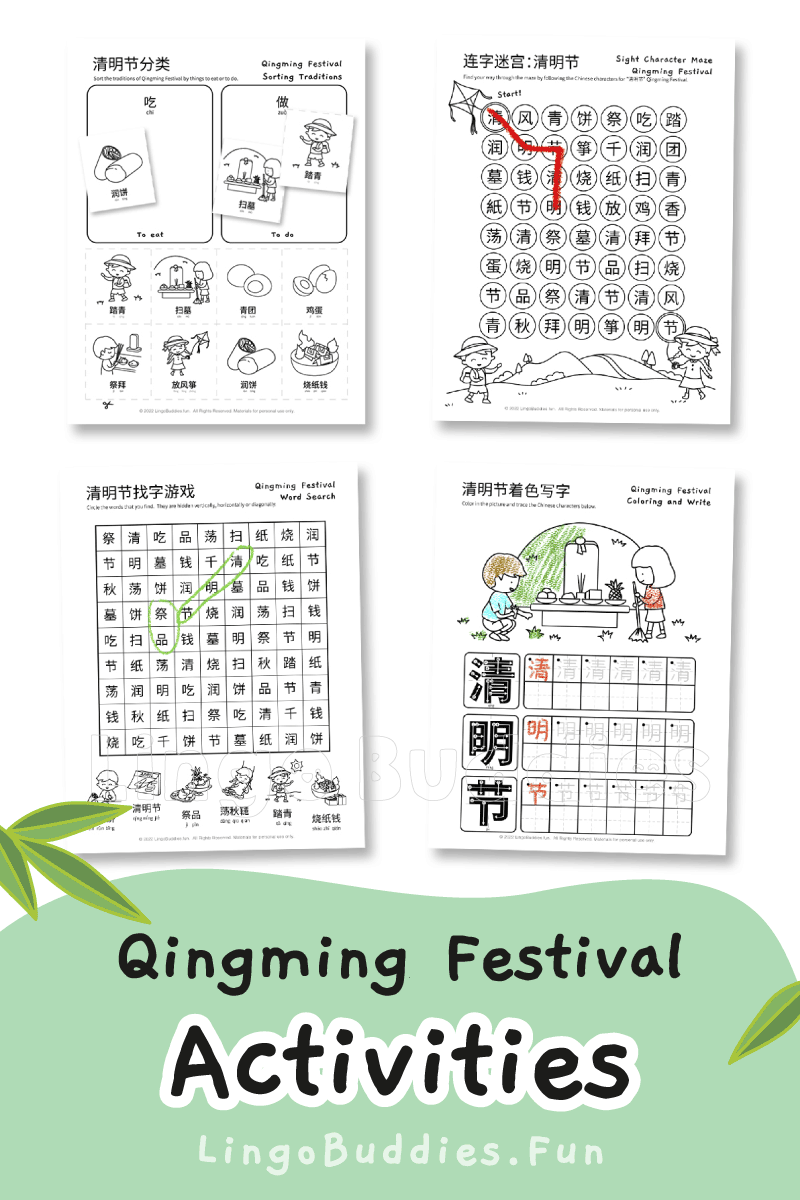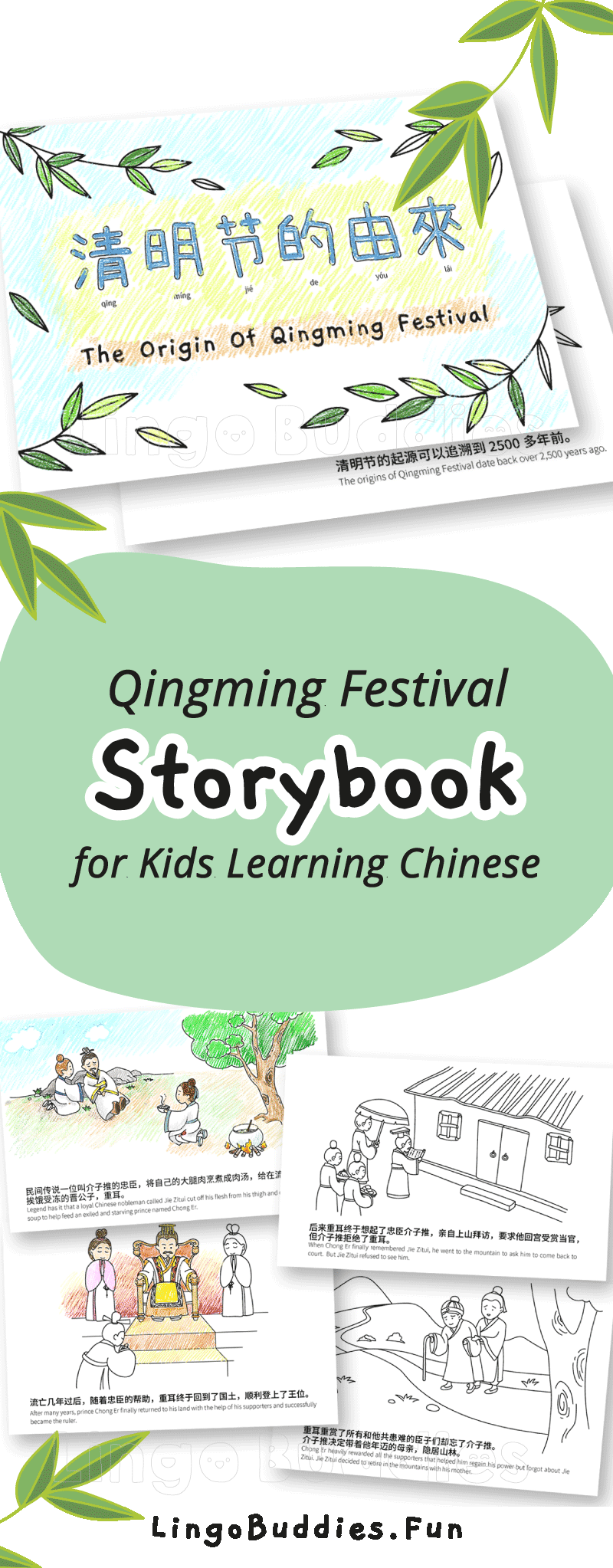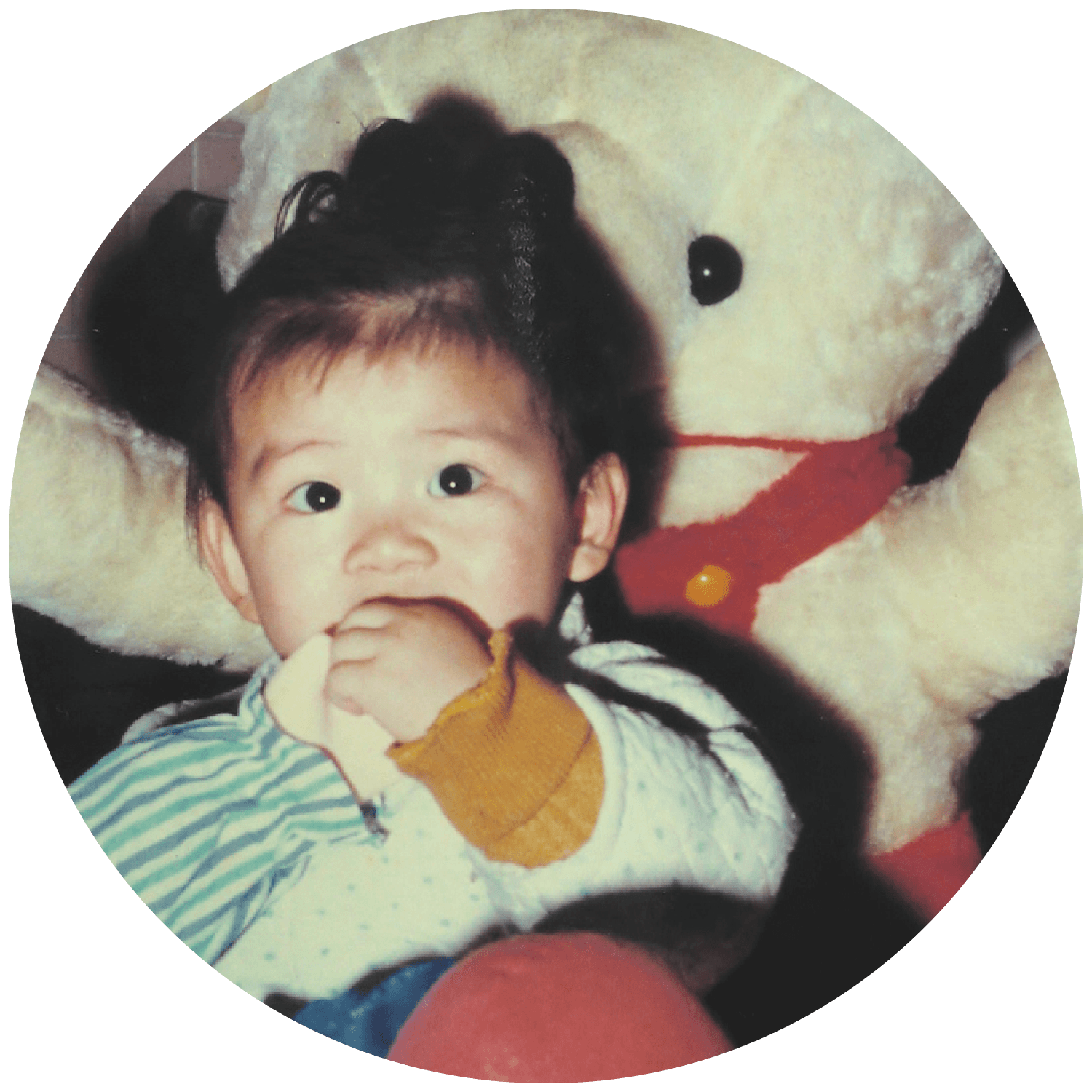Qingming Festival Activities for Kids Learning Chinese

Qingming Festival (Tomb Sweeping Day) is a very important holiday in China and Taiwan and Chinese ethnics in Malaysia, Singapore and Thailand. It’s a holiday that honors the dead relatives and ancestors. In a way it’s similar to Memorial Day in the US, but instead of commemorating those that served in the military, it commemorates those that passed away in your family. On Qingming Festival, families all gather at the graveyard to sweep the tombs of their ancestors and deceased relatives.
In my memories as a child, we would visit the tombs with cleaning supplies, offerings of fruits and incense, joss paper and a metal bucket for burning the joss paper. Upon arrival, the adults would sweep the tombs, wipe them down and do a bit of weeding. After that, they would set up the food offerings on plastic plates and burn joss paper in a metal bucket. The air always felt very solemn even though it was a family gathering of many kids. We know the visit is almost over when each of us would be handed an incense stick and together we would bow to pay respect our ancestors’ tombs. After that, one of my uncles or aunts would gather up all the incense sticks and put them in the incense pot. Then we would all drive to my grandparents’ house. The moment we get to the house, the mood immediately lightens. One of my uncles or aunts would continue to burn joss paper outside while the rest of us kids would head inside to mingle and play until it’s time for lunch. The lunch is usually served on a huge round wooden table filled to the edge with all kinds of homemade dishes. Adults would have their own table and the kids would sit at a different table or be dispersed around the house. If the weather were nice, we would go play outside while the adults enjoyed an afternoon of karaoke and tea and snacks. This is my memory of Qingming Festival.
Common Qingming Festival Traditions And Customs
Every family has their own family customs and traditions for Qingming Festival. But in general, it’s common among families to eat cold spring rolls [潤餅| 润饼 | rùn bǐng] also known as [春捲|春卷 |chūn juǎn] filled with sautéed cabbages, carrots, hard pressed tofu, eggs and peanut powder and sweet green rice balls filled with red bean [草仔粿|cǎo zǐ guǒ]in Taiwan or [青糰|青团|qīng tuán]in China. These cold food items are passed down from the old traditions of Hanshi Festival / Cold Food Festival [寒食節|寒食节|hán shí jié] which is now merged under Qingming Festival. You can find out more about the connection between these two festivals in the story about the origin of Qingming Festival below.
How Is It Celebrated Today?
Nowadays, with cremation becoming more common, instead of visiting the tombstones, many families visit the pagodas where the ashes of the deceased are stored and displayed with a tablet. There’s no actual tomb sweeping but food offerings and incense burning are still a part of the tradition.
Qingming Festival Vocabulary In Chinese And English:
Traditional | Simplified Pinyin | English
清明節 | 清明节 | qīng míng jié | Qingming Festival / Tomb Sweeping Day
掃墓 | 扫墓 | sǎo mù | sweep tomb
祭拜 | 祭拜 | jì bài | worship ancestors
祭品 | 祭品 | jì pǐn | offerings
燒紙錢 | 烧纸钱 | shāo zhǐ qián | burn joss paper
燒香 | 烧香 | shāo xiāng | burn incense
吃青團 | 吃青团 | chī qīng tuán | eat sweet green rice ball
吃潤餅 | 吃润饼 | chī rùn bǐng | eat spring rolls
吃雞蛋 | 吃鸡蛋 | chī jīdàn | eat eggs
踏青 | 踏青 | tà qīng | spring outing
放風箏 | 放风筝 | fàng fēng zhēng | fly a kite
盪鞦韆 | 荡秋千 | dàng qiū qiān | play on a swing
寒食節 | 寒食节 | hán shí jié | Cold Food Festival
And here are our hand-drawn Qingming Festival flashcards for visual cues or matching games.

Qingming Festival Printable Activities in Chinese:
To learn more about Qingming Festival, we made some simple activities to help your kids learn about this 2500 year old holiday. You can find them in our Qingming Festival category under Chinese Holidays.

The Origin of Qingming Festival
One of the most interesting parts about celebrating Chinese holidays is learning about its origin. There are always fascinating legends and folklore behind these Chinese festivals. For example, the Mid-Autumn Festival is laden with legends such as Chang-e and Hou-yi love story, Wu-gang chopping the tree that can never be cut and the Jade Rabbit's sacrifice. Qingming Festival also has a legend that dates back 2500 years ago. We made this story into a coloring storybook that you kindergarteners and first and second graders can color-in and use for story time.


Whether your little ones are in preschool, kindergarten, or elementary school, I hope these activities will spark their interest in learning about Chinese culture and language. For more Chinese Holidays' activities, see here.
Share your Qingming activities with our community of parents and teachers! Send your photos to careteam@lingobuddies.fun or add #lingobbudies to your social media posts!





0 Comments